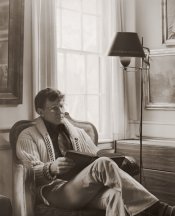I've been getting good enough results with my 5DII and Canon FD 35/2.8 Macrophoto (this is a high magnification lens that comes in RMS mount like a Luminar or a Photar) that I don't have any scanners anymore. I use various other lenses for larger formats, but the 35mm Macrophoto is great for 35mm and medium format, if I need that much resolution. I do everything on a copy stand with strobes for prints or a lightbox for transparencies and negs. I don't shoot very much color neg, so I haven't really sorted that out.
I find the camera gives me more exposure options than a scanner, and if I want higher resolution than I can get in one frame, I can always shoot multiple panels and get as many megapixels as the film is capable of resolving and as I have patience for, and I could even shoot more than one exposure and use HDR for a neg or transparency with an unusually wide density range (I think I've only done that once or twice).
For instance I had a slide of a historic event that I made in 1989 and that we wanted to print 4-color offset about 2.5 x 3 inches in a medium-gloss brochure, and the page design that worked involved about a Minox-sized bit of the full 35mm slide, so we used the crop from a 21 megapixel full frame image to lay out the page, and then I went back and put on a few more extension tubes and made a 21 megapixel image of approximately the crop we needed. Of course we were bumping against the grain limits of the film at that point, but we were able to pull out a lot more detail than we originally had. For that size and type of output, of course, in theory one shouldn't need that much resolution, but the more you can get from the film original, the more detail you'll have in the final image.






